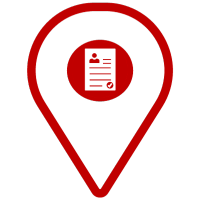Before packing, check this list of items prohibited from entering a particular country or region.
Key takeaways
- The Australian Skilled Occupation List (SOL) is an official publication by the country's government that outlines in-demand roles and training opportunities for immigrants.
- Jobs in demand in Australia are healthcare assessors, lending managers, clinical assessors, support practitioners, and sales appointment setters.
- The fastest-growing jobs in Australia are English teachers, servers, travel specialists, sommeliers (wine servers), and electrical designer engineers.
- The ANZSCO code is a six-digit classification number assigned to occupations in each nation's labour markets.

Australian Skilled Occupation List explained
The Australian Skilled Occupation List (SOL) is an official publication by the country's government that outlines in-demand roles and training opportunities for immigrants moving to Australia. It helps regulate skilled migration by selecting candidates with expertise in sector shortages.
The SOL includes each occupation's Australian and New Zealand Standard Classification of Occupations (ANZSCO) code, its applicable visa types, and its assessing authority.
It also breaks down each occupation into the following:
- Medium and Long-term Strategic Skills List (MLTSSL): high-demand roles that qualify for independent, employer-sponsored, and state-nominated skilled visas,
- Short-term Skilled Occupation List (STSOL): occupations for short-term employer-sponsored visas with limited pathways to permanent residency,
- Regional Occupation List (ROL): in-demand roles in regional areas of Australia.
To immigrate to Australia under the skilled migration program, applicants must have their skills assessed by a Department of Home Affairs-authorised body, such as Trades Recognition Australia (TRA), Vocational Education and Training Assessment Services (VETASSESS), or Engineers Australia. Assessments typically include verifying qualifications, work experience, and competency in the relevant profession.
For the 2024-25 program, Australia allocated
132,200 visas
via the skilled migration stream
Fastest growing jobs in Australia
The fastest-growing jobs in Australia are English teachers, servers, travel specialists, sommeliers (wine servers), and electrical designer engineers, according to LinkedIn Australia.
In an ever-changing employment landscape, anticipating future trends is essential. The rise of AI continues to affect job closures, the importance of upskilling, and the creation of brand-new roles. LinkedIn Australia based their results on millions of job postings experiencing positive growth from 2021 to 2024.
Here are the top 10 roles and their most applicable skills:
- English teachers: curriculum development, teaching English as a second language, educational technology and classroom management.
- Servers: customer service, food and beverage operations, multitasking and time management.
- Travel specialists: business travel, itinerary planning, customer relationship management, tourism and event management.
- Sommeliers: wine education, food and beverage operations, wine pairing, customer service and restaurant management.
- Electrical designer engineers: power distribution, AutoCAD, electrical wiring and renewable energy systems.
- Cost controllers: project control, forecasting, budget analysis and contract management.
- Fundraising managers: philanthropy, donor relations, strategic planning, event management and community engagement.
- Health directors: public policy, stakeholder engagement, strategic planning and change management.
- Quality coordinators: regulatory compliance, risk management, quality assurance, internal audits and continuous improvement.
- Aircraft maintenance engineers: airworthiness, line maintenance, aircraft systems, troubleshooting and flight safety.

What jobs are in demand in Australia in 2025?
Jobs in demand in Australia are healthcare assessors, lending managers, clinical assessors, support practitioners, and sales appointment setters, according to seek.com. The online employment marketplace compiled a list of 20 in-demand roles by examining increases in job ads between 2023 and 2024.
Seek.com's results reflect a shift in Australia's job market, with industries such as healthcare, banking, community services, and construction experiencing notable growth. It also reveals the increasing need for mental health services, social care, and community support as the Australian population ages. Similarly, technology-driven positions like data analysts are rising as industries rely more on AI insights to make decisions.
In addition, sales and customer-facing positions, such as appointment setters, sales representatives, and engagement coordinators, are rising, highlighting the continued importance of face-to-face interaction with customers.
Here is the complete list of seek.com's 20 in-demand roles, their 1-year growth in job listings, and their average salary*:
| Job | '23-'24 growth | Average salary |
| Healthcare assessors | 165.9% | AU$96,154 (US$60,671/£29,679) |
| Lending managers | 163.3% | AU$133,903(US$41,331/£65,504) |
| Clinical assessors | 142.9% | AU$88,660 (US$55,942/£27,366) |
| Support practitioner | 127.3% | AU$90,714 (US$57,238/£44,376) |
| Appointment setters | 90.3% | AU$70,985 (US$44,790/£34,725) |
| Food servers | 90% | AU$55,050 (US$34,735/£26,929) |
| Building certifier | 73.3% | AU$114,317 (US$72,131/£55,922) |
| Building supervisor | 72.4% | AU$106,840 (US$67,413/£52,265) |
| Maintenance operator | 68.6% | AU$63,877 (US$40,305/£31,247) |
| Retail dispenser | 64.3% | AU$59,300 (US$37,417/£29,008) |
| Optical assistant | 62.9% | AU$54,778 (US$37,417/£29,008) |
| Community engagement coordinator | 62% | AU$85,787 (US$54,129/£41,966) |
| Maintenance team leader | 61.8% | AU$69,491 (US$43,847/£33,994) |
| Government data analyst | 60.6% | AU$105,093 (US$66,311/£51,410) |
| Dog groomer | 60.3% | AU$64,256 (US$40,544/£31,433) |
| Construction estimator (supervisor) | 59.5% | AU$102,054 (US$64,394/£49,923) |
| School chaplain | 59.4% | AU$86,332 (US$54,473/£42,232) |
| Sales representative | 58.8% | AU$70,627 (US$44,564/£34,550) |
| Community mentor | 57.8% | AU$71,760 (US$45,279/£35,104) |
| Health coach | 57.1% | AU$80,272 (US$50,650/£39,268) |
*Salaries accurate as of 2025
What is the skilled occupation list for Australia?
The Skilled Occupation List (SOL) for Australia lists over 600 occupations in demand nationwide. It helps determine eligibility for skilled migration visas, ensuring Australia's workforce meets current and future economic needs. The SOL is updated yearly to reflect job market changes and address skill shortages.

ANZSCO skill level
The range and difficulty of a particular occupation's expected tasks determine its ANZSCO skill level, measured by formal education and training, on-the-job training, and previous work experience. Generally, the more complex the tasks, the higher the skill level required.
ANZSCO skill levels range from 1 to 5:

Skill level 1 (doctors, engineers, IT professionals): a bachelor's or postgraduate degree and, in some cases, relevant work experience or at least five years of relevant experience.

Skill level 2 (paramedics, police officers, construction managers): a NZ registered diploma, AQF associate degree, advanced diploma, diploma or equivalent qualification, and, in some cases, relevant work experience or at least three years of relevant experience.

Skill level 3 (electricians, chefs, mechanics): a NZ register level 4 qualification, AQF certificate IV or AQF Certificate III, including at least two years of on-the-job training or equivalent qualification, and, in some cases, relevant work experience or, at least three years of relevant experience.

Skill level 4 (retail supervisors, truck drivers, security officers): a NZ register level 2 or 3 qualification or AQF Certificate II or III and, in some cases, relevant work experience or at least one year of relevant experience.

Skill level 5 (cleaners, kitchen hands, labourers): a NZ register level 1, AQF Certificate I, compulsory secondary education or equivalent qualification, and, in some cases, relevant work experience.

What is ANZSCO code?
The ANZSCO (Australian and New Zealand Standard Classification of Occupations) code is a six-digit classification number assigned to occupations in each nation's labour markets. ANZSCO serves various statistical purposes and programs that support government policy, including the Census of Population and Housing, and the skilled migration program.
Applicants with relevant skills and experience must nominate an occupation and include its specific ANZSCO code when applying for an Australian visa.
Each code provides detailed information, including:
- Job title and description
- Necessary qualifications and experience
- Skill level and specialisations
For example:
- Software Engineer – ANZSCO 261313 (Skill Level 1)
- Registered Nurse – ANZSCO 254499 (Skill Level 1)
- Electrician – ANZSCO 341111 (Skill Level 3)
ANZSCO categorises occupations into eight major groups: managers, professionals, technicians and trade workers, community and personal service workers, clerical and administrative workers, sales workers, machinery operators and drivers, and labourers. These main groups are then broken down into increasingly smaller sub-categories before resulting in the specific occupation.
To search for an ANZSCO code, visit the Australian Bureau of Statistics (ABS) website.











